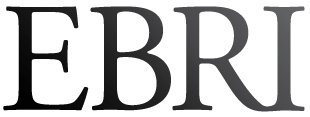Issue Briefs
“Maximizing Contributions to an HSA: Findings from the EBRI HSA Database,” and “Debt of the Elderly and Near Elderly, 1992–2013”
HSAs: Who contributes the maximum amount to their health savings accounts (HSAs)? New research by EBRI finds that about 15 percent of HSA owners contributed the maximum amount possible in 2013. Press release.
Debt: A larger share of older American families had debt in 2013, and those with debt loads that are considered problematic also increased, according to a new report from EBRI. Press release.
“How Does Household Expenditure Change With Age for Older Americans?” and “2014 Health and Voluntary Workplace Benefits Survey: Most Workers Continue to be Satisfied With Their Own Health Plan, but Growing Number Give Low Ratings to Health Care Syste ..
Older Americans: Although health expenses increase steadily with age, and remain a cause of concern, home and home-related expenses are the largest spending category for older Americans, according to a new report by EBRI. Press release.
Workplace Benefits Survey: Although American workers rank their own health care highly, their opinion of the overall U.S. health care system is low and continues to fall, according to a new report by EBRI. Press release.
"Crisis" Management: Uncertainty and the Workplace
'Characteristics of the Population With Consumer-Driven and High-Deductible Health Plans, 2005–2013,' and 'Labor-force Participation Rates of the Population Ages 55 and Older, 2013'
Consumer-Driven Health Plans: Compared with those in traditional health plans, those in so-called "consumer-driven" health plans tend to have higher income, more education, and be in better health, according to a new report by EBRI. Press release.
Labor-force Participation: Older workers—those 55 and older—are a growing presence in the American work force, a trend driven mainly by women, according to a new report by EBRI. Press release.
“2013 Health and Voluntary Workplace Benefits Survey: Nearly 90% of Workers Satisfied With Their Own Health Plan, But 55% Give Low Ratings to Health Care System,” and “How Does Household Income Change in the Ten Years Around Age 65?”
Health Care Satisfaction—While the vast majority of workers say they are satisfied with their own health insurance plan, more than half give low ratings to the American heath care system as a whole, according to a new survey by EBRI and Greenwald & Associates. Press release.
Household Income—Will Americans have to live on less after they turn age 65? It often depends on how much your income was before you turned age 65, according to a new report by EBRI. Press release.
“Debt of the Elderly and Near Elderly, 1992–2010,” and “Employer and Worker Contributions to Health Reimbursement Arrangements and Health Savings Accounts, 2006–2012”
Debt of the Elderly: American families headed by individuals age 75 or older had increases in the incidence of debt, the average amount of debt held, and the percentage with debt payments greater than 40 percent of their income in 2010, according to new research by EBRI. The driver of debt for families with a head age 55 or older was housing debt. Press release.
HRA/HSA Contributions: A growing share of both employers and individual participants are contributing to their health reimbursement arrangements (HRAs) and health savings accounts (HSAs), according to a new report from EBRI. Press release.

